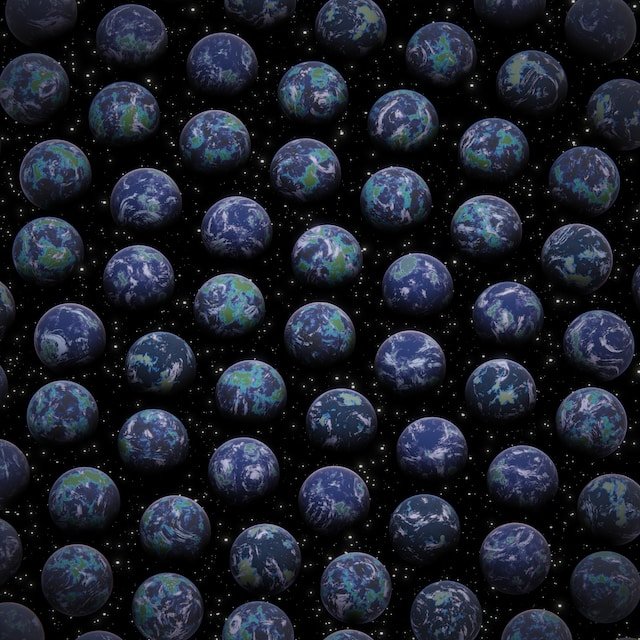Multiverse and Metaverse – two seemingly identical terms, which are in fact significantly different. Yet, for many, the distinction between these two still remains ambiguous. Even when conducting searches in Google, it is common to see suggestions to replace the term Multiverse with Metaverse. So, what actually is the difference between Metaverse and Multiverse? We will explain it in this article – read on if this is a topic of interest to you.
Metaverse vs Multiverse – Defining the Two
For our discussion on Multiverse vs Metaverse to be fruitful, we need to understand the concept behind each of these terms. For this sake, we have prepared short definitions.
Metaverse: A virtual space enabling people to interact with each other and digital objects. It required creating a digital avatar that preserves your Metaverse identity to use it. You may seamlessly transition between different areas and worlds in the Metaverse.
Multiverse: It is a set of different digital spaces. Users may interact with objects and other people in each of these spaces, yet they remain separate entities. This means that it is only possible to use one of such areas at a time, and a seamless transition between them is impossible.
What Is the Difference between Metaverse and Multiverse?
Just after this brief introduction of Metaverse and Multiverse, it is possible to spot some main differences. The first one is the number of digital ecosystems.
A Metaverse is a single digital world – it consists of various areas seemingly separate from each other, yet it is a unified digital space. A Multiverse, on the other hand, is merely a collection of different digital ecosystems, fully separate universes available in one place.
The second aspect that bears a difference between the Metaverse and the Multiverse is the connection flow. As it was mentioned before, users may transition freely from one world in a Metaverse to another, since in fact, it is one universe. In a Multiverse, such a transition cannot happen – every world is a different entity.
The lack of connection between the worlds in a Multiverse causes one additional issue, related to the virtual goods. In the Metaverse, users may purchase their metaverse NFTs and transport them freely throughout the whole platform. They have complete ownership of the goods that they acquired. But, in the Multiverse, all the items belong to the entity behind the particular world, making full ownership simply impossible.
Unlock the future with Mazer: Your innovation partner.
Metaverse and Multiverse: What If These Two Were Put Together?
Different as they are, there exists a concept of combining Multiverse and Metaverse. It is targeted at resolving the issue of a centralized Metaverse, which could be censored and non-democratic. How exactly is it supposed to work?
The general principle of a multiverse approach to Metaverse is to let multiple creators contribute to creating different worlds. The areas within the Metaverse need to be interconnected, yet may be developed by different entities, separately, as individual projects. This would lead to the creation of a decentralized space where the users may effortlessly move between different digital areas while maintaining higher data security and ownership.
Such an approach would also be beneficial for the sake of scalability and interoperability. With the development of different blockchains, integrity will become much more difficult to achieve. By designing Metaverse as a Multiverse, this would have to be accomplished, thus ensuring that the technologies would remain compatible.
The other alternative is that the Metaverse will grow as a separate, parallel entity to the Multiverse. Would it be beneficial for the users? It seems that it would not. Decentralization is the key for the Metaverse to work for everyone, thus these two concepts will need to be combined.
https://www.traditionrolex.com/39
Metaverse vs Multiverse: Conclusions
What is the difference between a Metaverse and a Multiverse? The former is one entity consisting of different worlds which are interconnected with one another. The latter is purely a collection of different entities grouped together. Combining these two concepts will result in a multiverse Metaverse – a virtual space containing different virtual spaces designed by various entities, a truly decentralized digital environment. Will this approach be undertaken? Only time will tell.
What is your opinion on this matter? Share your thoughts in a comment and consider reading our other articles, for example: The Metaverse: What The Experts Are Saying
What is the main difference between the Metaverse and the Multiverse?
The primary difference is in the structure. The Metaverse is a single digital world with interconnected areas, while the Multiverse is a collection of separate digital ecosystems or universes. Users can freely move between different areas in the Metaverse, but in the Multiverse, each world is isolated.
Can the Metaverse and the Multiverse be combined?
Yes, there is a concept of combining them to create a multiverse Metaverse. This approach aims to address centralization issues in the Metaverse by allowing multiple creators to develop different interconnected worlds.
What are the potential benefits of designing the Metaverse as a Multiverse?
Designing the Metaverse as a Multiverse can enhance scalability, interoperability, and compatibility with evolving technologies. It allows for multiple creators to contribute, creating a more decentralized and user-friendly digital environment where users can seamlessly navigate between different digital areas.
Unlock the future with Mazer: Your innovation partner.
